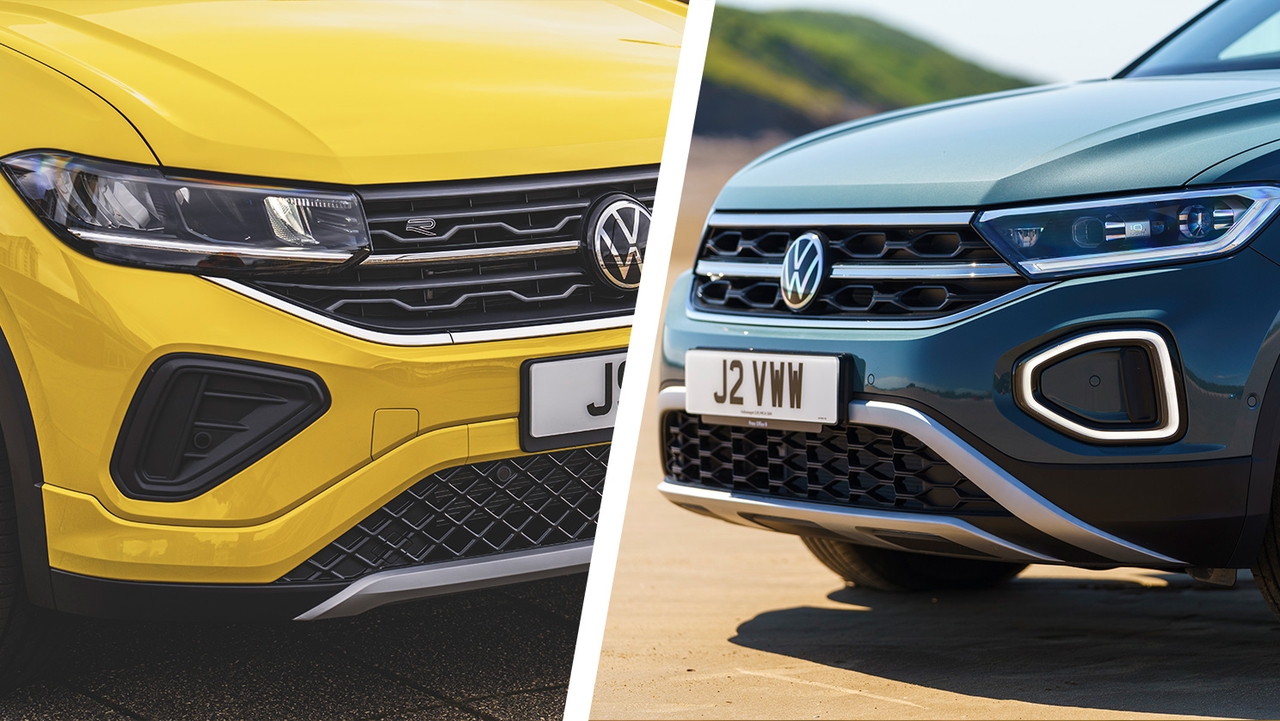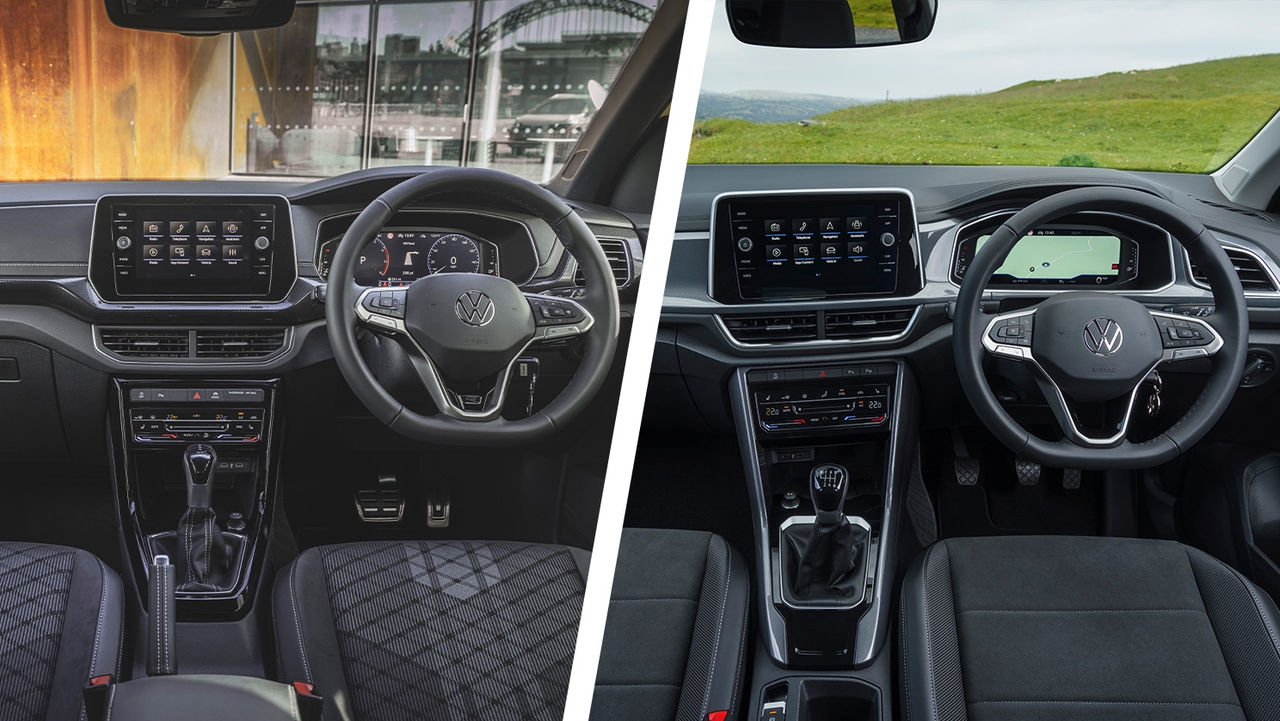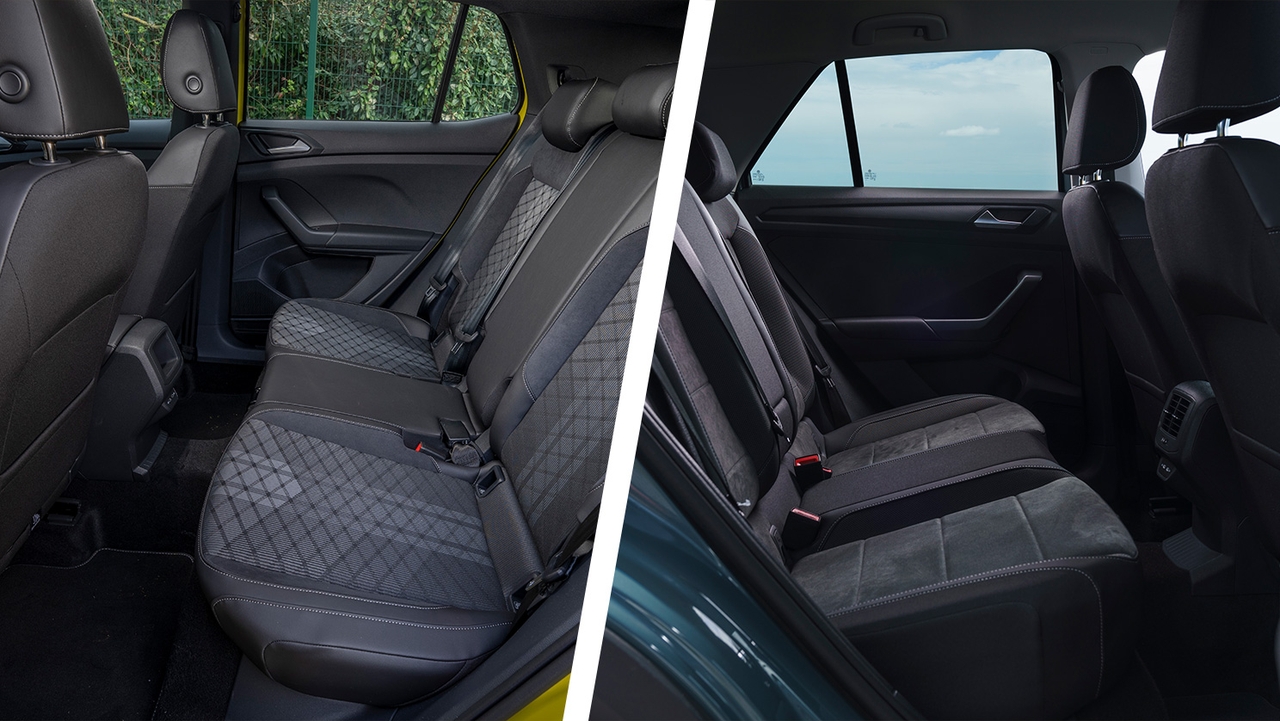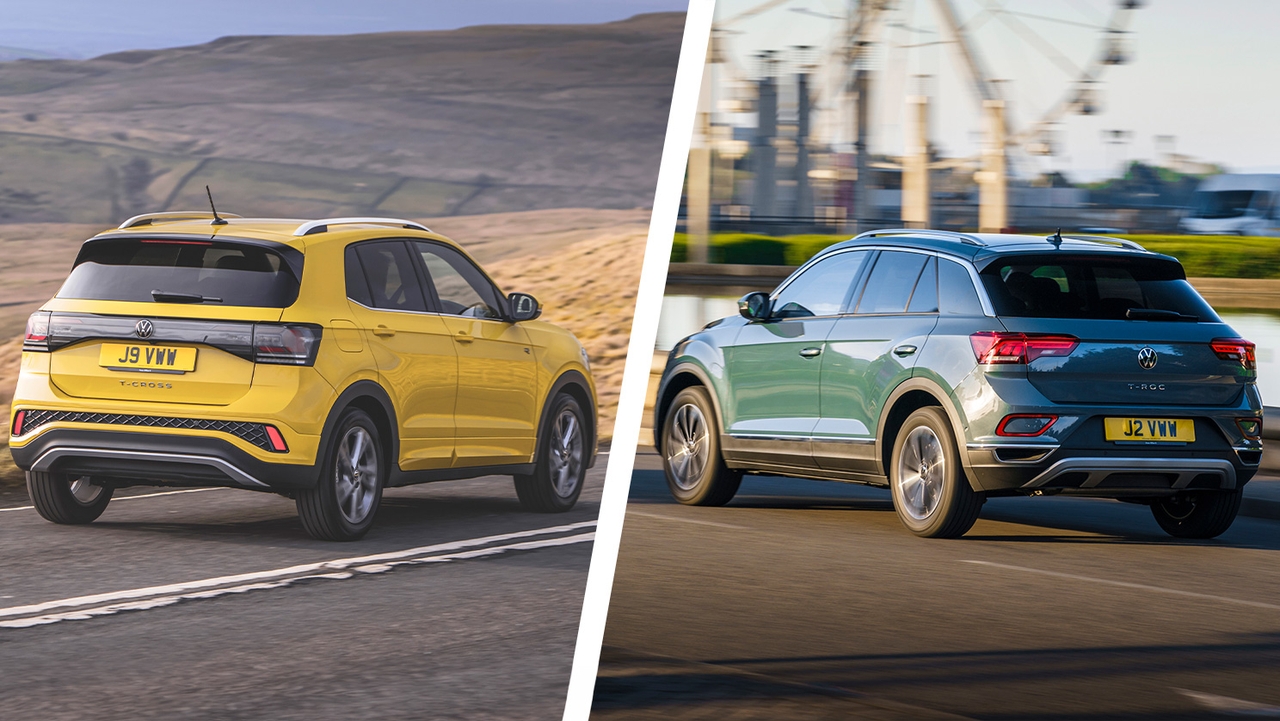The top line is that both of these Volkswagen SUVs are pretty good in most areas. But you could probably guess that if you’ve experienced a recent VW.
The Volkswagen T-Cross and Volkswagen T-Roc sound confusingly similar, and there’s not much difference in their size either. Even more mind-bogglingly, there’s a third VW SUV that squeezes between these two – the Taigo.
Initially the T-Cross and T-Roc could be mistaken for the same car but, because of their different underpinnings, there are actually several big distinctions. Read on to find out which car is better.
Volkswagen T-Cross vs T-Roc compared
| Volkswagen T-Cross | Volkswagen T-Roc |
Pros:
| Pros:
|
Cons:
| Cons:
|
Styling

The apple doesn’t fall far from the tree for these two VW SUVs – both have a typically Volkswagen design. Smart, conservative styling with just enough flourishes to stop them feeling anonymous. The T-Cross has a chunkier, squarer design, while the T-Roc looks a little more laidback and has beefy creases on the wheel arches. Both are available in a range of trim levels with increasingly large alloy wheels, and exclusive badges and bumpers for top-spec cars.
Interior
Inside, the similarities are even stronger, to the point where these two cars have almost identical cabins. You’ll find a modestly sized touchscreen with shortcut tabs on each side, plus a digital instrument cluster on a lot of models and a panel of climate controls lower down.

Even with the fiddly climate control touch panels, the interior of the T-Cross and T-Roc is easier to use than that of the 2020-2024 Golf. The touchscreen, laid out into obvious submenus, is very intuitive – and Apple CarPlay and Android Auto are both included on all but the base S trim levels of each car.
Early versions of the T-Cross and T-Roc came with the option of colourful trim packs that made the space more youthful and fun, if a bit hard and plasticky. In more recent years these cars have defaulted to swathes of black and grey trim and upholstery, aiming for a more grown-up feel – like other Volkswagens. Thankfully, material quality improved with the push for sophistication. And the cheaper materials are still put together well.
Dimensions and practicality
| Volkswagen T-Cross | Volkswagen T-Roc | |
| Length | 4,127mm | 4,236mm |
| Height | 1,573mm | 1,573mm |
| Width (inc mirrors) | 1,993mm | 2,012mm |
| Boot space (seats up) | 385-455 litres | 395-445 litres |
Looking at this table, you might wonder why Volkswagen bothers to sell two or three different SUVs that are so similarly proportioned. The T-Roc is around 10cm longer than the T-Cross, but it’s still shorter than a Golf hatchback – so threading it into a parking space is still quite easy. It’d be easier still if a reversing camera was more widely available, but we digress.

The T-Cross aims to boost versatility with a sliding rear seat bench. In its rearmost position there’s plenty of legroom and a 385-litre boot, or you can slide it all the way forwards for a 70-litre boot space increase. In practice, though, there’s no legroom with the bench slid forwards, and a not-too-useful gully where the seats were.
The bigger T-Roc has a fixed rear bench but it has more legroom and more luggage space than the T-Cross, so is a better choice for a growing family or carrying stuff. It’s worth noting that four-wheel-drive T-Rocs have 50 litres less boot space than front-drive cars, dropping to 395 litres.
Engines
The T-Cross is based on the Polo and the T-Roc shares its underpinnings with the Golf. You won’t notice any difference from behind the wheel, but the engine lineup is a little different – although, not immediately.
Both cars are offered with a 1.0-litre turbocharged petrol engine with 115hp and a six-speed manual gearbox, which is more than powerful enough to get both cars up to speed with no fuss. This engine is also available on the T-Cross with an automatic gearbox, or as a 95hp version with a five-speed manual.

Next is a 1.5-litre turbo petrol engine with 150hp. On the cheaper T-Cross it’s only available on higher-spec trim levels and with an automatic gearbox, while it’s more widely offered on the T-Roc with a choice of manual or automatic gearboxes.
That’s where the T-Cross’ engine range runs out, but the T-Roc train continues with a 190hp 2.0-litre petrol engine with an auto and four-wheel drive. Incidentally, the T-Roc is the smallest VW SUV to be offered with four-wheel drive. The T-Roc still has a diesel engine option (it’s long been discontinued in the T-Cross) which is capable of 56mpg, so is worth hunting out for motorway regulars.
A fast but unexciting range-topper is available in the T-Roc range. The T-Roc R comes into bat with a 300hp petrol engine and a sub-five-second 0-62mph time – double the power of the most potent T-Cross.
Value and reliability
With so many shared parts, one is not going to be more reliable than the other. Besides software glitches that can afflict any modern car (and you’d be unlucky to come across one on later models), we haven’t heard of any long-term issues with either the T-Cross or T-Roc. Remember that a diesel T-Roc will need semi-frequent longer journeys to avoid clogging up the diesel particulate filter (DPF), and infrequent AdBlue topups.
As a new car, an entry-level T-Cross is almost £4,000 cheaper than the most affordable T-Roc. The difference isn’t quite so chasmic on the used market but whatever your budget, you’ll find T-Crosses with lower mileage, higher spec or newer plates than T-Rocs.
Which is best?
These two cars are so well matched that, in some respects, you might as well decide by eeny meeny miney mo. The T-Cross is better value but the T-Roc counters by being more practical in real life. If you’re regularly taking adult passengers, the T-Roc is going to be the better bet – although the T-Cross can still accommodate adults if you’d rather get a newer car for the same money. Diesel and performance buyers are only catered for by the T-Roc; the 1.0-litre and 1.5-litre petrol engines are more than sufficient for everyone else.
Read our Volkswagen T-Cross review and Volkswagen T-Roc review for more info, or read our best small SUVs guide.

































